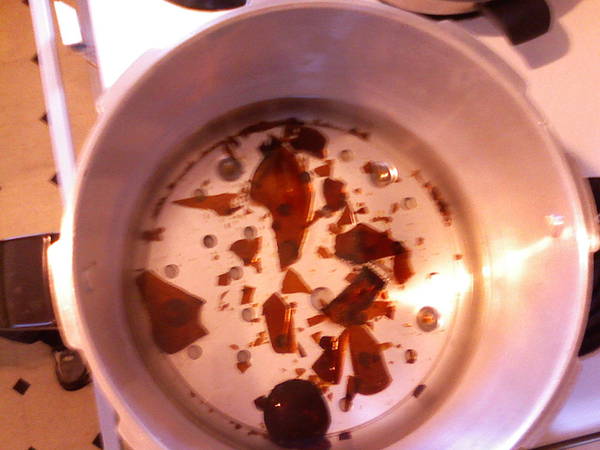PintOfBitter
Well-Known Member

BANG!!!!!
I will be cooking up another batch of ginger ale, and this time I really want to be able to ship some bottles off to my mom, who is a ginger freak. I've been wanting to experiment with pasteurizing already carbed bottles at home, but have found no info about it.
You see what the result was, but let me explain the experiment:
I knew the main concern would be the increase in CO2 pressure at elevated temperatures, so I filled a New Belgium bottle with club soda (very fizzy, as you know) and capped it off. I put the bottle in my pressure canner with 1 gallon of water, and started increasing the temp, rather gently, to a simmer. Pasteurization temp should be able to be kept below 180F I think (can't find good tables that aren't for milk), but I was going for a worst case experiment.
I removed the emergency relief valve (rubber plug) from the canner lid so that it was not generating pressure and high temps.
Anyway, about 5 minutes into the simmer, BANG!!! I now know that I'll be looking at low temp pasteurization!
Question: Anyone have a good idea of how the big guys do it? I know it involves hot water spraying of the bottles, but I don't have any temperature information.
Seen any pasteurization time and temp tables used for beer or soda?



 .
.